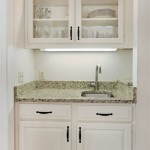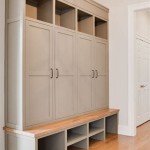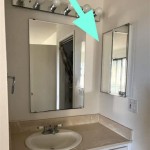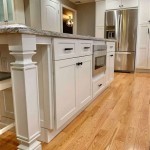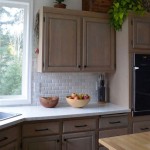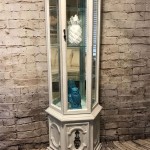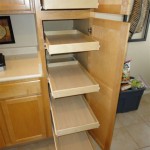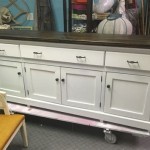Here's an article on maximizing home office space with cabinetry design, adhering to the given constraints:
Making The Most Of Home Office Space With Cabinetry Design
The shift towards remote work has necessitated the evolution of the home office. No longer a mere afterthought, the home office is now a critical space demanding functionality and efficiency. Effective utilization of this space is paramount, and cabinetry design plays a pivotal role in achieving optimal organization and aesthetic appeal. Thoughtfully designed cabinetry can transform a cluttered, unproductive area into a streamlined and inspiring workspace, contributing significantly to enhanced focus and overall well-being.
This article explores various aspects of cabinetry design that can maximize the utility of a home office. We will examine key considerations for planning, selecting materials, and customizing solutions to meet individual needs and spatial constraints. The objective is to provide a comprehensive understanding of how cabinetry can fundamentally redefine the functionality and aesthetics of the modern home office.
Optimizing Space Through Strategic Planning
The initial stage of any cabinetry project involves meticulous planning. Before considering aesthetics, it is crucial to assess the specific needs of the workspace. Begin by identifying the essential functions the office must serve. Will it be used solely for computer work, or will it also accommodate client meetings, creative projects, or storage of physical documents? The answer to this question will directly influence the type and configuration of cabinetry required.
Detailed measurements of the room are essential for accurate space planning. Consider the overall dimensions, window and door placements, and any existing architectural features that might impact the design. A floor plan, either hand-drawn or created using software, can be invaluable in visualizing different cabinetry layouts. This visual representation allows for experimentation with various configurations and helps identify potential challenges before any construction begins.
Vertical space is often underutilized in home offices. Tall cabinets that extend to the ceiling can provide ample storage without consuming valuable floor space. Consider incorporating adjustable shelves to accommodate items of varying sizes. Wall-mounted cabinets offer another space-saving solution, freeing up floor space and creating a more open and airy feel. These elevated storage units can be used for books, files, or decorative items, contributing to a more organized and visually appealing environment.
Ergonomics is another crucial consideration in the planning phase. The placement of cabinets should not impede movement or create awkward workspaces. Ensure that frequently used items are easily accessible, minimizing the need to stretch or strain. Consider the positioning of drawers and shelves in relation to the desk and chair to promote a comfortable and efficient workflow. Thoughtful ergonomic design will contribute to a more productive and enjoyable work experience.
Finally, consider the wiring and cabling requirements of your technology. Incorporate cable management solutions into the cabinetry design to prevent tangled wires and maintain a clean, organized aesthetic. This can include dedicated cable channels, grommets, and hidden compartments for power strips and other electronic components. A well-planned cable management system will not only improve the appearance of the office but also enhance safety and prevent potential hazards.
Material Selection and Aesthetics
The choice of materials significantly impacts the aesthetics and durability of the cabinetry. A wide range of options are available, each with its own unique characteristics and advantages. The selection should be based on personal preferences, budget considerations, and the desired overall style of the office.
Solid wood cabinets offer a classic and timeless appeal. They are known for their durability and natural beauty. However, solid wood can be more expensive and requires proper maintenance to prevent warping or cracking. Engineered wood products, such as plywood and MDF (medium-density fiberboard), provide a more cost-effective alternative while still offering good durability and stability. These materials can be finished with veneers, laminates, or paint to achieve a variety of looks.
Laminates are a popular choice for home office cabinetry due to their affordability, durability, and ease of maintenance. They are available in a wide range of colors, patterns, and textures, allowing for a high degree of customization. Laminates are also resistant to scratches, stains, and moisture, making them a practical choice for a busy workspace.
Consider the hardware used for the cabinets, such as handles, knobs, and hinges. These small details can have a significant impact on the overall aesthetic of the cabinetry. Choose hardware that complements the style of the cabinets and provides a comfortable grip. Metal hardware, such as brushed nickel or stainless steel, offers a modern and sleek look, while wooden or ceramic hardware can add a touch of warmth and character.
The color scheme of the cabinets should complement the overall décor of the room. Light colors can create a more spacious and airy feel, while dark colors can add a touch of drama and sophistication. Consider using contrasting colors for the cabinets and the walls to create visual interest. Natural wood tones can add warmth and create a more inviting atmosphere. Ultimately, the color choice should reflect personal preferences and create a comfortable and inspiring workspace.
Lighting plays a crucial role in showcasing the cabinetry and enhancing the functionality of the office. Incorporate under-cabinet lighting to illuminate work surfaces and highlight the textures and colors of the materials. Consider using LED lighting, which is energy-efficient and provides a bright, even light. Strategic placement of lighting can significantly improve the ambiance of the office and create a more productive and enjoyable work environment.
Customization and Functional Features
One of the greatest advantages of choosing cabinetry for a home office is the ability to customize it to meet specific needs. Standard cabinets may not always provide the optimal solutions for unique requirements, making customization a valuable consideration.
Built-in desks integrated with cabinetry offer a seamless and efficient workspace. These desks can be designed to fit specific dimensions and incorporate features such as keyboard trays, cable management systems, and storage compartments. A built-in desk can create a more cohesive and organized look, maximizing space and minimizing clutter.
Filing cabinets are essential for organizing and storing documents. Consider incorporating filing cabinets into the cabinetry design, choosing sizes and configurations that meet specific needs. Vertical filing cabinets are ideal for maximizing space, while lateral filing cabinets offer easy access to files. Labeling systems can further enhance organization and facilitate efficient retrieval of documents.
Open shelving provides a versatile storage option for books, decorative items, and other frequently used items. Open shelves can add visual interest to the office and create a more inviting atmosphere. Consider using a combination of open and closed cabinets to balance storage and display needs. The arrangement of items on open shelves can be carefully curated to create a visually appealing and organized display.
Drawers offer a convenient way to store smaller items, such as office supplies, stationery, and personal belongings. Consider incorporating drawers of varying sizes and depths to accommodate different types of items. Dividers and organizers can be used to keep drawers neat and tidy, maximizing space and facilitating easy retrieval of items. Soft-close drawer slides can enhance the functionality and durability of the cabinets, preventing slamming and extending their lifespan.
Consider incorporating specialized storage solutions into the cabinetry design, such as pull-out trays for printers or scanners, hidden compartments for valuable items, or adjustable shelves for accommodating items of varying sizes. These customized features can significantly enhance the functionality of the office and create a more efficient and organized workspace. The possibilities for customization are virtually limitless, allowing for the creation of a truly unique and tailored home office environment.

New Home Office Cabinet Ideas Storage Solutions Built In Cabinets

New Home Office Cabinet Ideas Storage Solutions Built In Cabinets

How To Create A Cozy Home Office In Small Space

Home Office Trends 2025 Create A Stylish Ive Space Decorilla Interior Design

7 Inspiring Home Offices That Make The Most Of A Small Space

How To Create A Cozy Home Office In Small Space

How To Create A Diy Office Desk With Kitchen Cabinets

New Home Office Cabinet Ideas Storage Solutions Built In Cabinets

Diy Home Office Built Ins Part 2

Before After Minimal Zen Home Office Design Decorilla Interior
Related Posts

